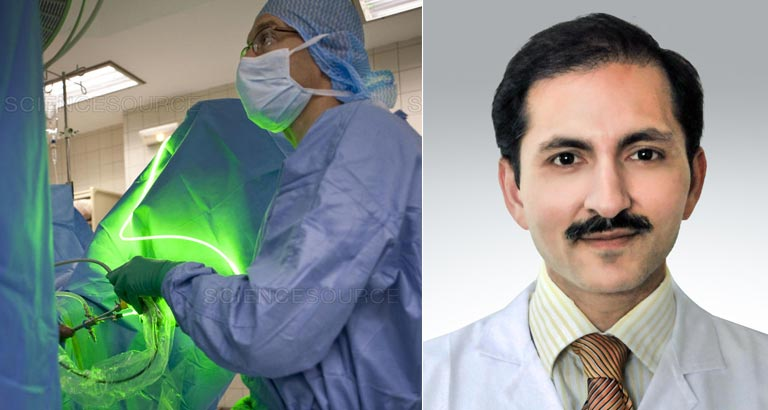
Dr Krishanu Das, consultant urologist, andrologist, minimally invasive and transplant surgeon, explains a new technology that has arrived in the Kingdom.
The prostate gland, located right below the urinary bladder, is part of man’s reproductive system. Its job is to make the fluid to carry and nurture sperm. Non-cancerous growth of the prostate aka benign prostate hyperplasia (BPH), is one of the commonest urological problem affecting men above 50 years. Whilst this condition is not life-threatening, the overgrown prostate tissue encroaches on the urine outlet and interferes with satisfactory emptying of the urinary bladder.
This results in a constellation of symptoms such as frequent toilet visits, waking from sleep to empty the bladder, straining to pass urine or a need to rush to the toilet. BPH-related symptoms not only affect the life quality and functioning of men but unaddressed, in the long term, this can potentially lead to serious problems such as infection, bleeding, complete blockage of urine and damage to the bladder or kidneys.
Although BPH-related symptoms may respond to medications, in conditions as complete stoppage of urine, ongoing infection or bleeding, and also when medicines are ineffective in providing relief, surgery is required.
Regular Surgery
Surgery for BPH aims at removing excess prostate tissue that is obstructing the urinary outlet. Fortunately, with the developments in modern medicine, presently surgery for BPH is conducted endoscopically, through the natural urinary orifice. The most widely practised endoscopic surgery for BPH, popularly known as transurethral resection of prostate (TURP), involves shaving the excessive tissue using a thin, hot loop of wire. Though this is an effective treatment, it is often associated with excessive bleeding, need for prolonged postoperative drainage catheter and thermal damage to neighbouring organs. Further, TURP can be a risky procedure in patients on blood thinners, those with larger prostates, and patients with pacemakers due to uncontrollable bleeding associated with this procedure.
The Advantages of Laser
Laser is a device that emits light through a process of optical amplification based on stimulated emission of electromagnetic radiation. Since its advent, it has become ubiquitous, finding utility in thousands of highly varied applications in every section of modern society. Laser is currently being used in several disciplines of modern medicine. Due to attributes such as precision and superior bleeding control, it is favoured by surgeons and increasingly used in performing different surgeries.
Laser prostate surgery ranks amongst the recent most technological advancements in the field of urology and is currently offered in expert centres worldwide. In this procedure, an extremely thin laser fibre is passed through the endoscope to the prostate and the laser is then turned on to blast the tissue. According to experts, the new laser treatment is more convenient for patients. Not only can the procedure be conducted more precisely and almost bloodlessly, it may be used for all categories of patients including those with heart problems or those on blood thinners. The recovery from this procedure is much faster than the TURP.
BSH recently acquired the most powerful laser currently available worldwide for prostate surgeries. The mighty 140w machine is capable of dealing with large prostates with the advantage of minimal bleeding and precision. Patients with prostate problems can now enjoy the benefits of this latest technology right at their doorsteps.
A shorter hospital stay and lesser suffering from the conventional prostate endo-surgery (TURP) are additional advantages from this procedure.
Call 17 812-000 or 17 812-222 or email [email protected]



